Project Adrift (Cath Le Couteur and Nick Ryan)
Series of five artworks:
Machine 9
Earthly Debris Cabinet
Secret World of Space Junk
Debris-o-Gram
A spatula. An astronaut’s suit. A piece of satellite debris. These objects are among the hundred million fragments of space debris orbiting the Earth, some of which are also being tracked in real time by space agencies. When these objects enter the Earth’s atmosphere, they burn up and disintegrate. But most of them remain in orbit, forming a dangerous dance, otherwise capable of inflicting considerable damage on the International Space Station and operational satellites. Project Adrift aims to make the invisible over-population of our space neighbourhood tangible through the manifestation of the materiality of these objects. The works presented in The Secret World of Space Junk elevate our awareness of the equal urgence of ecological issues on the Earth’s surface as well as in space.
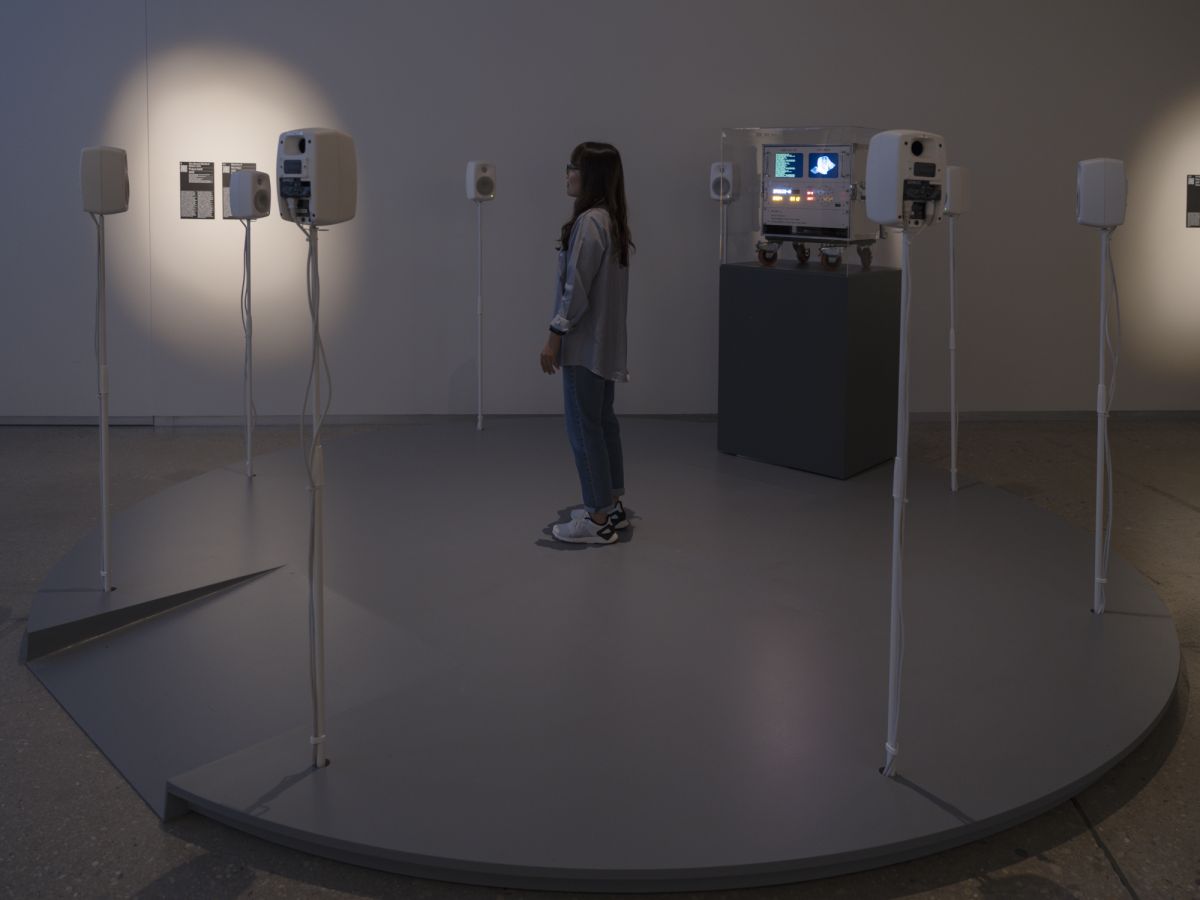
Image: Julien Gremaud.
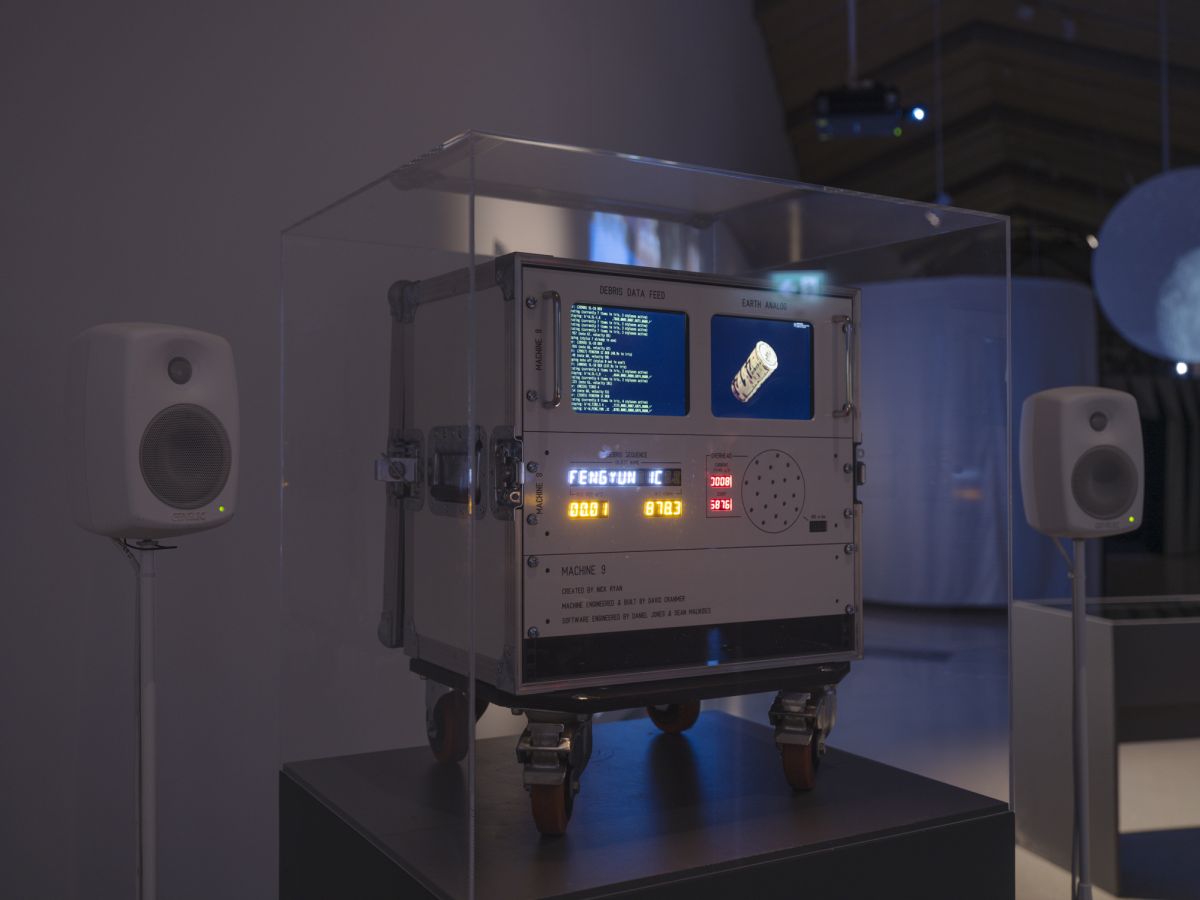
Image: Julien Gremaud.
Machine 9
Sound installation, 8 speaker-array, orbital mechanics simulator, display unit.
Nick Ryan
2017
At the centre of a 360-degree soundstage, made of a circle of eight speakers, is a glass case containing Machine 9. This complex sound instrument was crafted by the artist to calculate the real-time location of 52,829 of the largest pieces of space junk orbiting Earth. The name, altitude, speed, and size of each debris object that passes directly overhead appears on the display. Each appearing piece triggers Machine 9 to select a sound from a library of 1000 foley audio recordings of ‘Earthly Debris’ (see Earthly Debris Cabinet). Among other factors, the size of an object determines which sound is selected: low-pitched recordings represent large objects and higher pitched sounds, small objects. The position of sounds in the eight speakers indicates the changing location of the object in the sky. The moment that an object disappears over the detectable horizon, it falls silent.
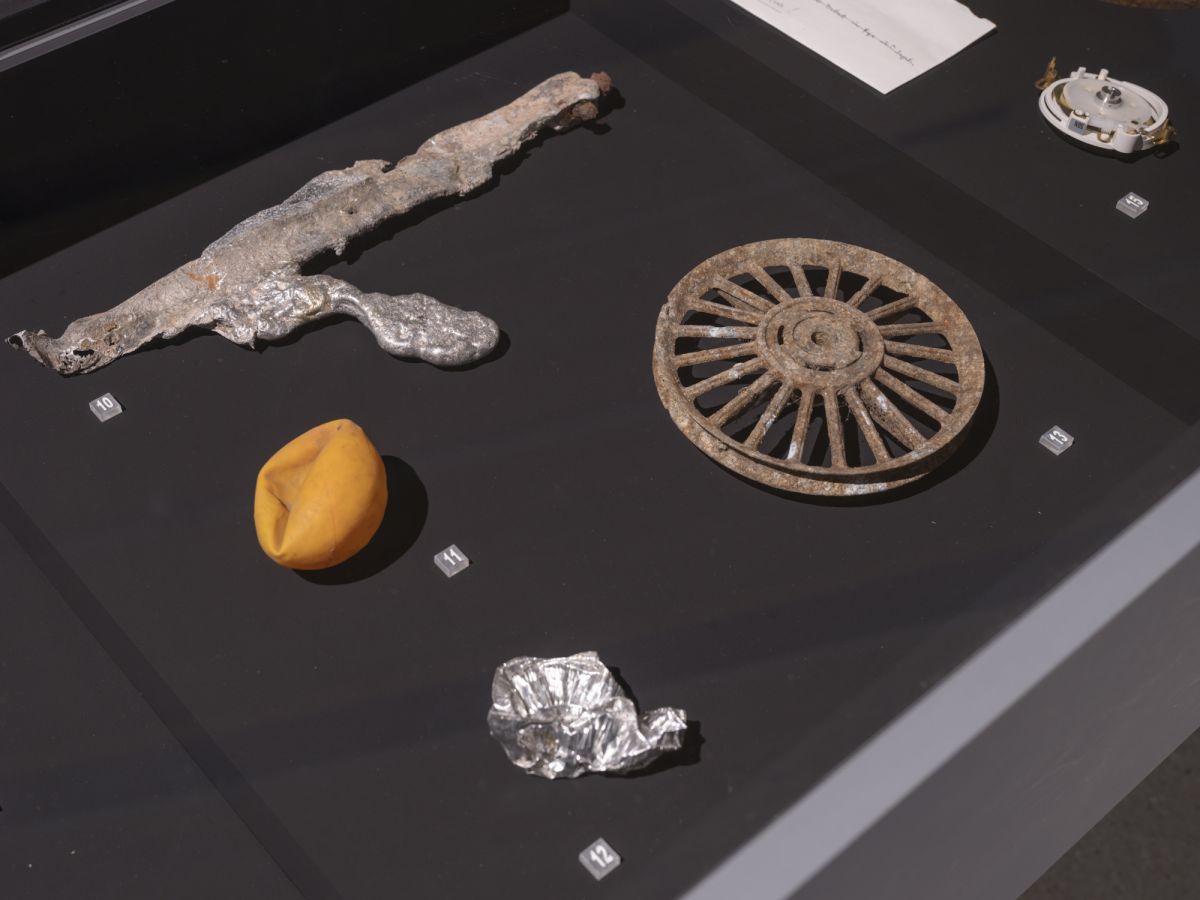
Image: Julien Gremaud.
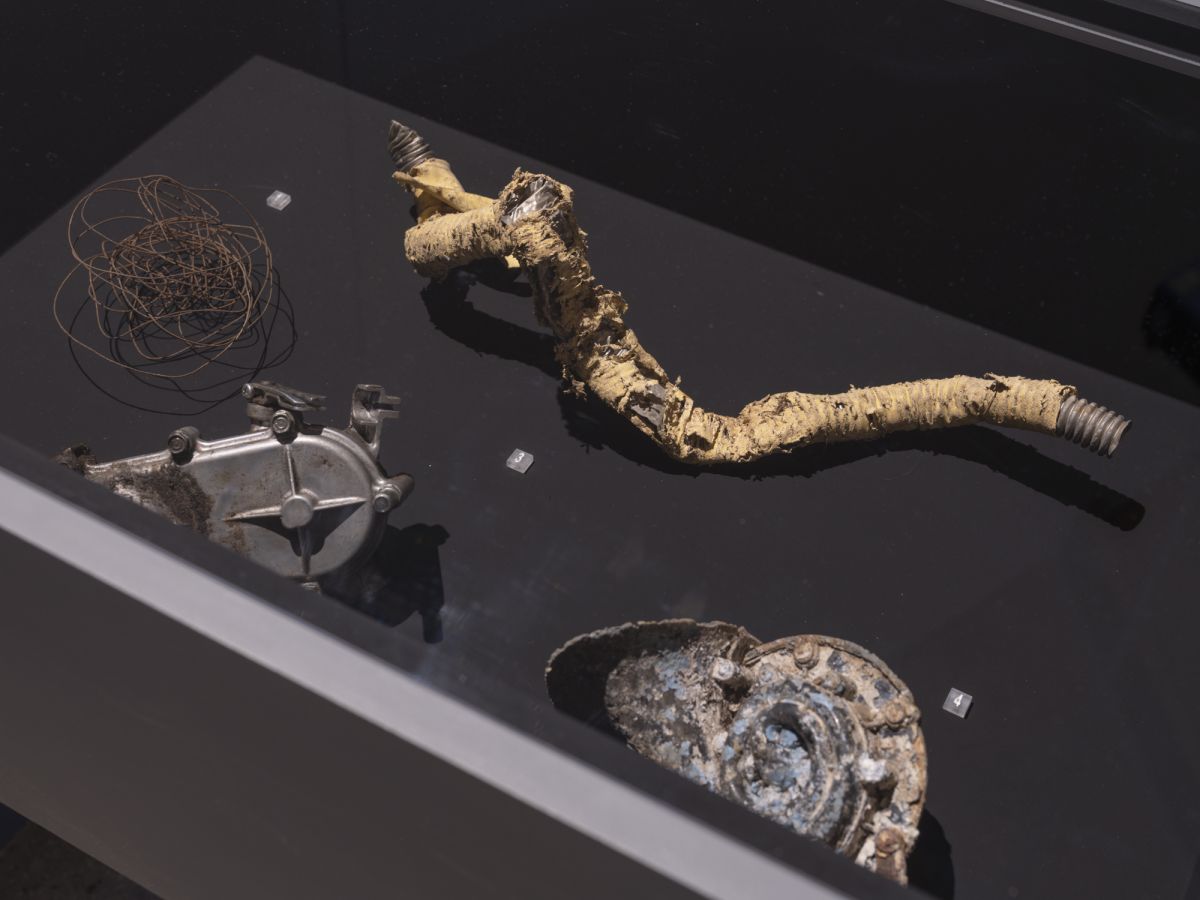
Image: Julien Gremaud.

Image: Julien Gremaud.
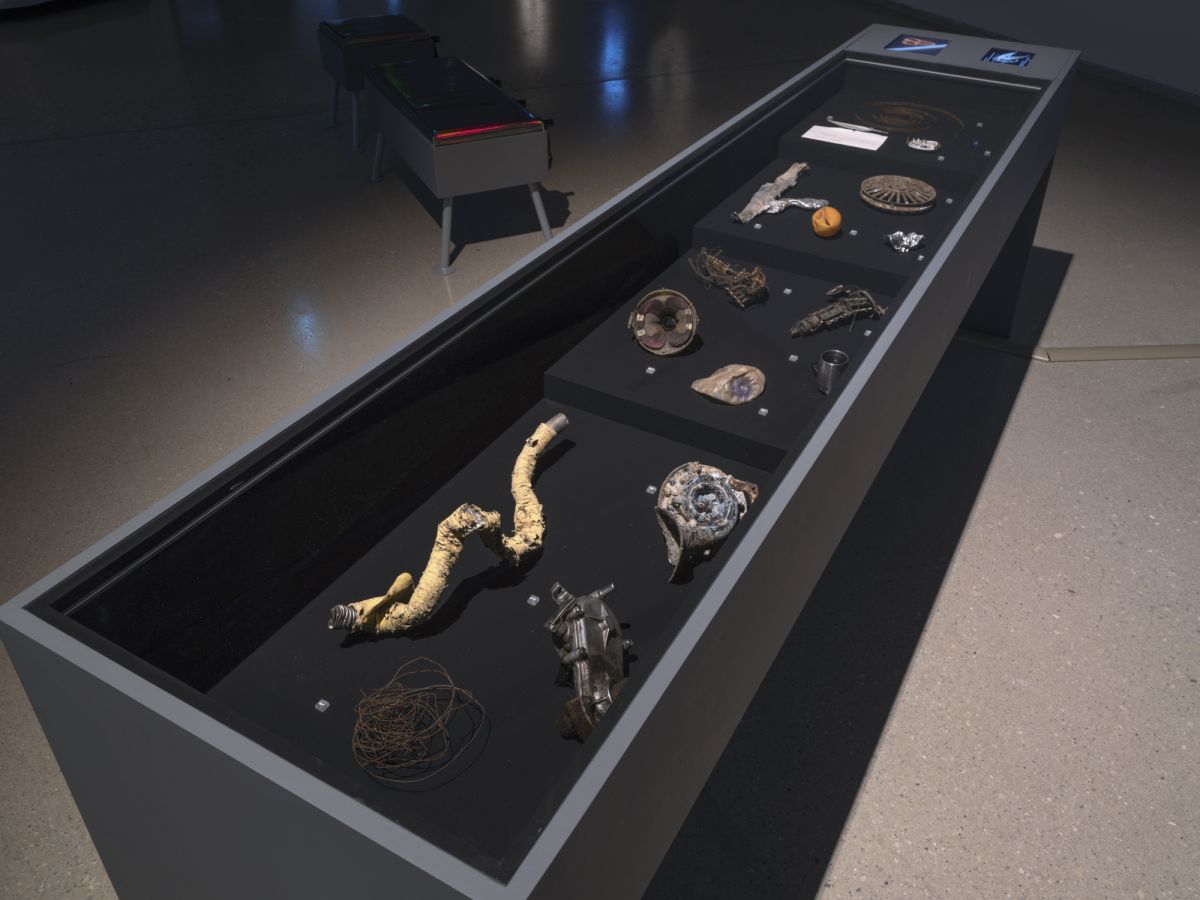
Image: Julien Gremaud.
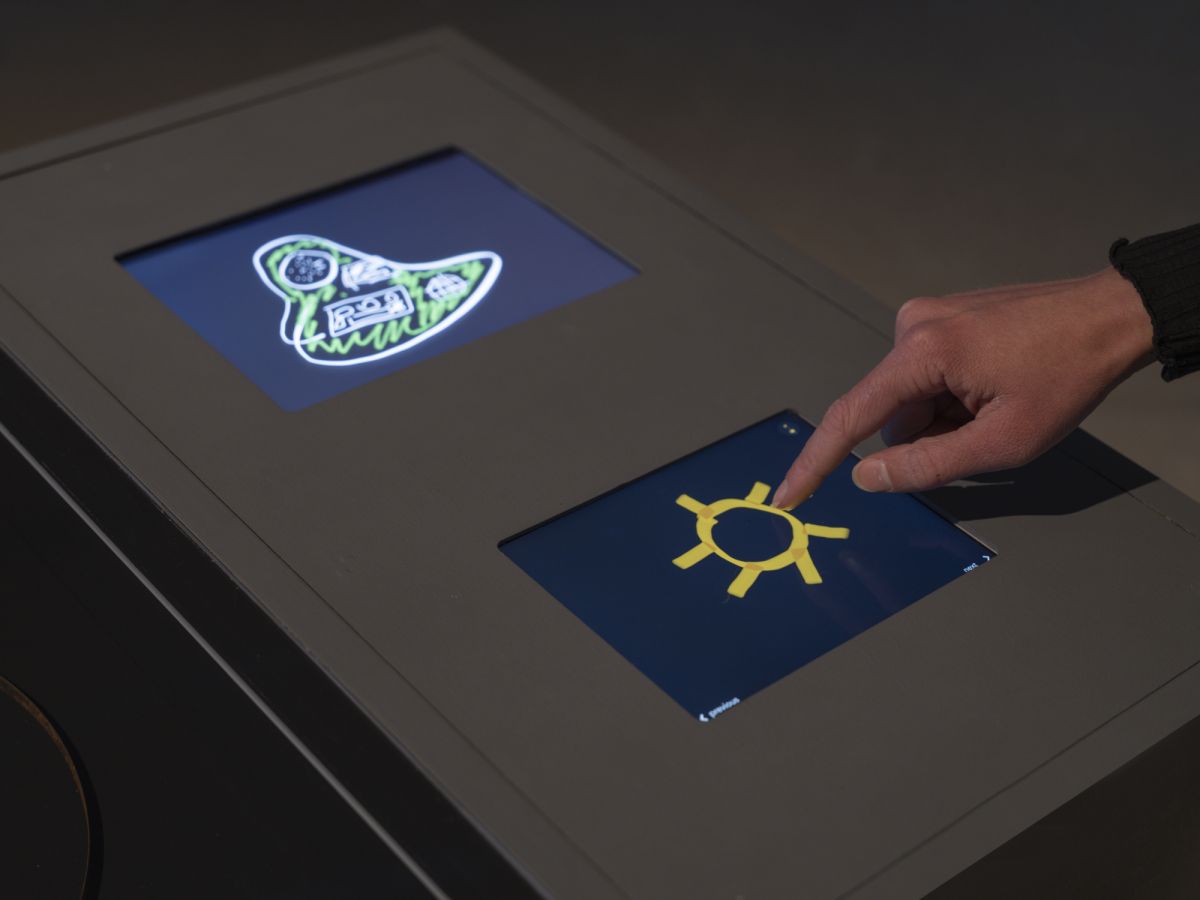
Image: Julien Gremaud.
Earthly Debris Cabinet
Installation of 17 objects, 12-inch display monitor, iPad.
Nick Ryan
2017
Earthly Debris Cabinet is a museological display of 17 terrestrial objects chosen by project volunteers as symbolic pieces of space debris, offering a link between everyday objects and space junk. Over 250 objects were submitted to the artist who used them to generate a library of 1000 sounds for the sound instrument Machine 9. An interactive screen invites visitors to create an illustration of a piece of space debris to be added to the display.
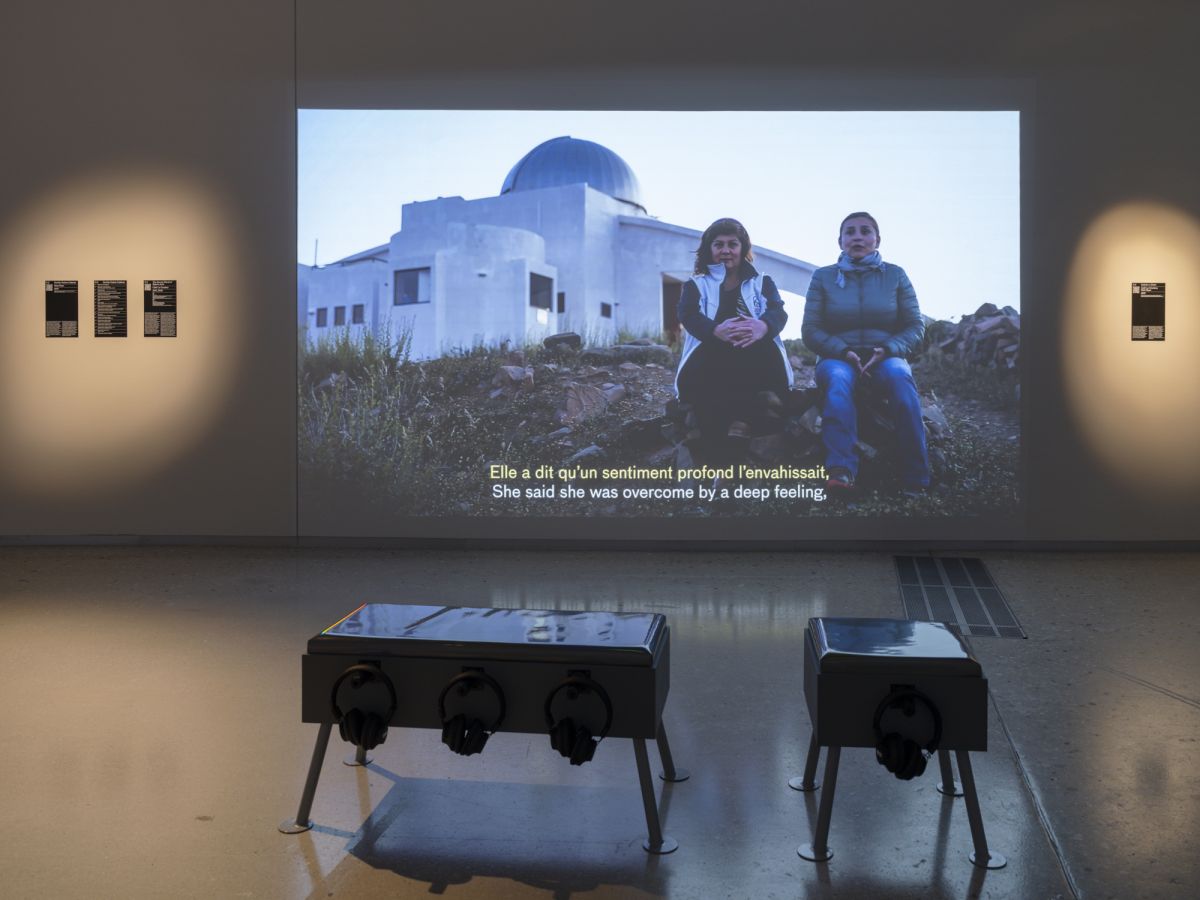
Image: Julien Gremaud.
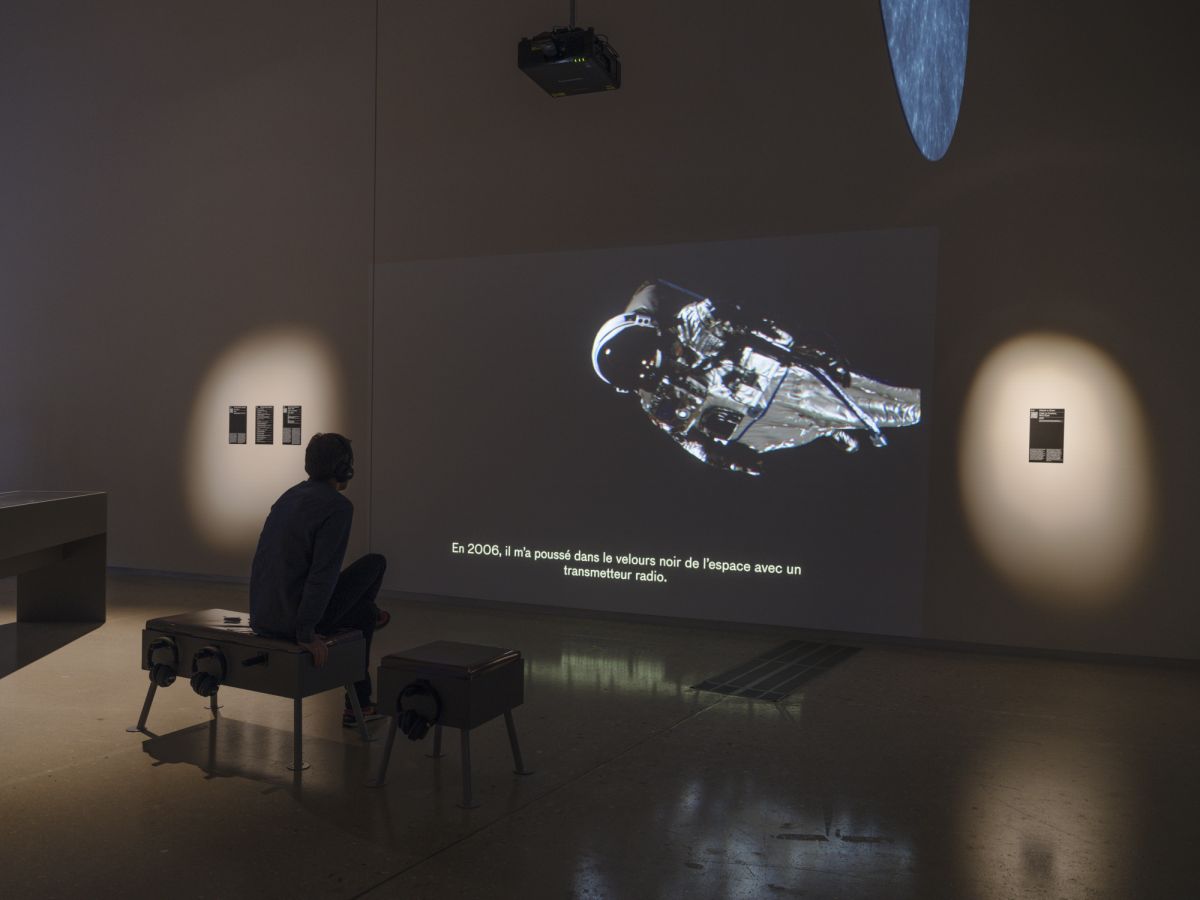
Image: Julien Gremaud.
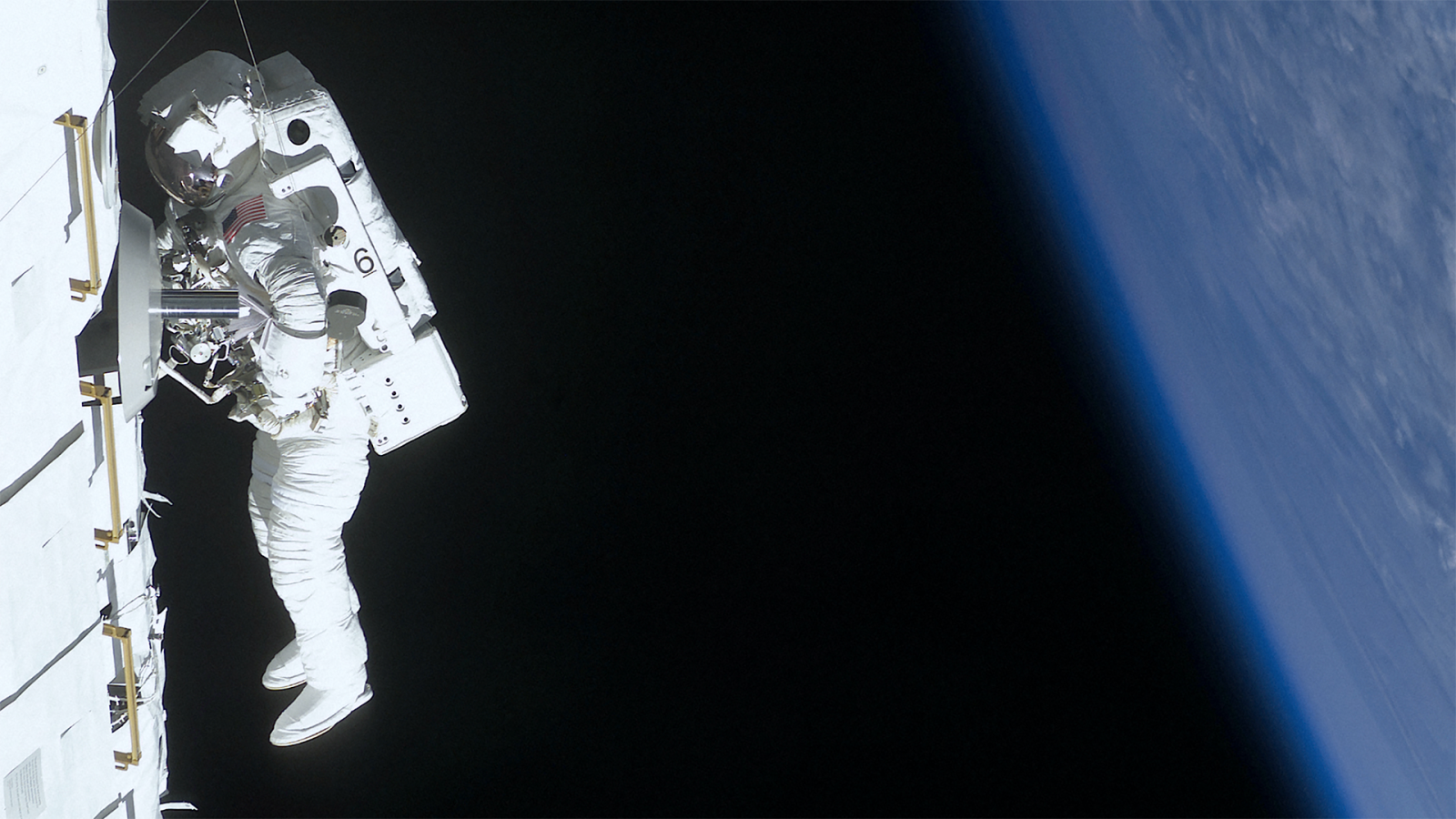
Adrift, images: Cath Le Couteur, Daffy London. Courtesy of the artists.
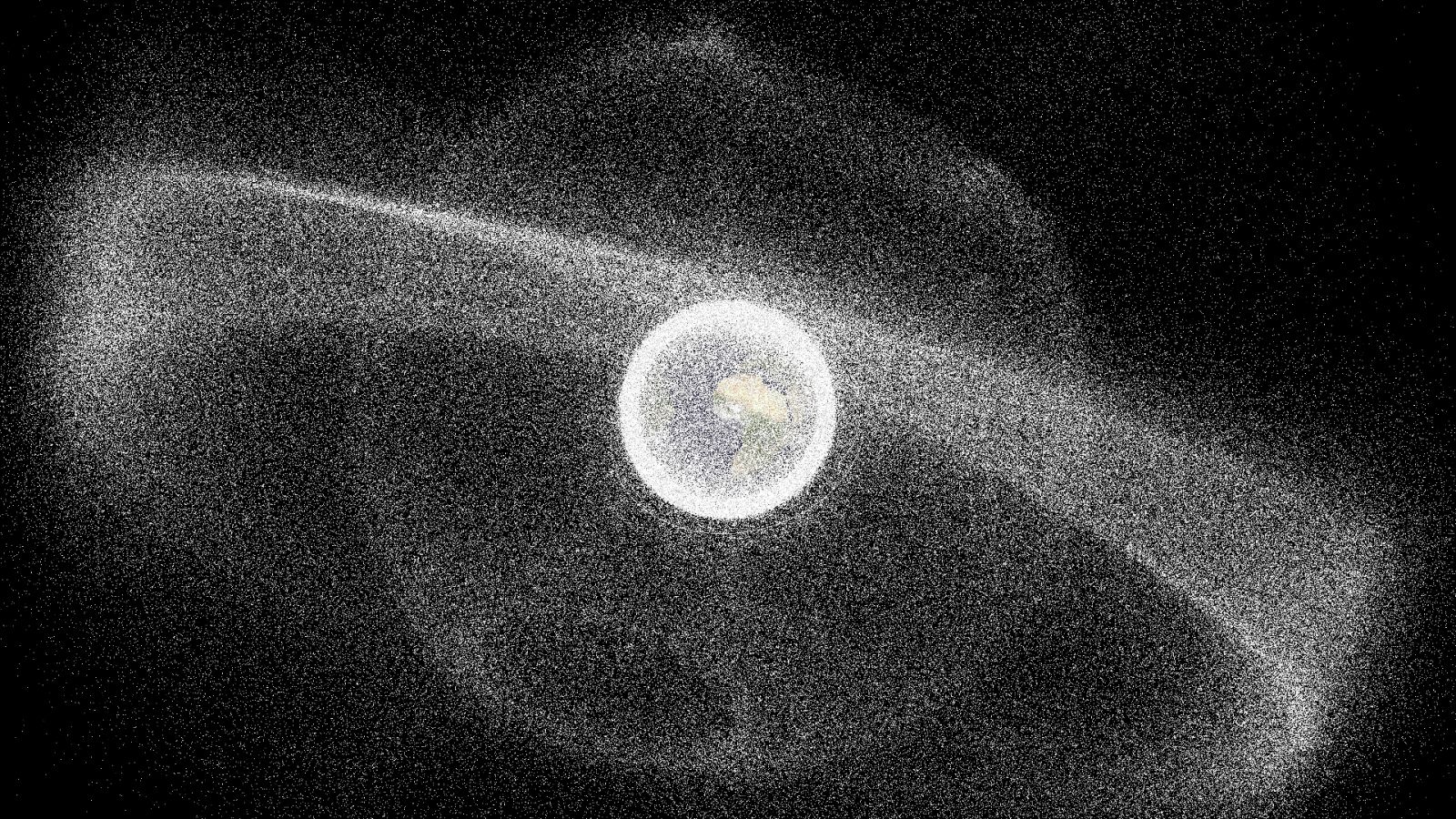
Adrift, images: Cath Le Couteur, Daffy London. Courtesy of the artists.
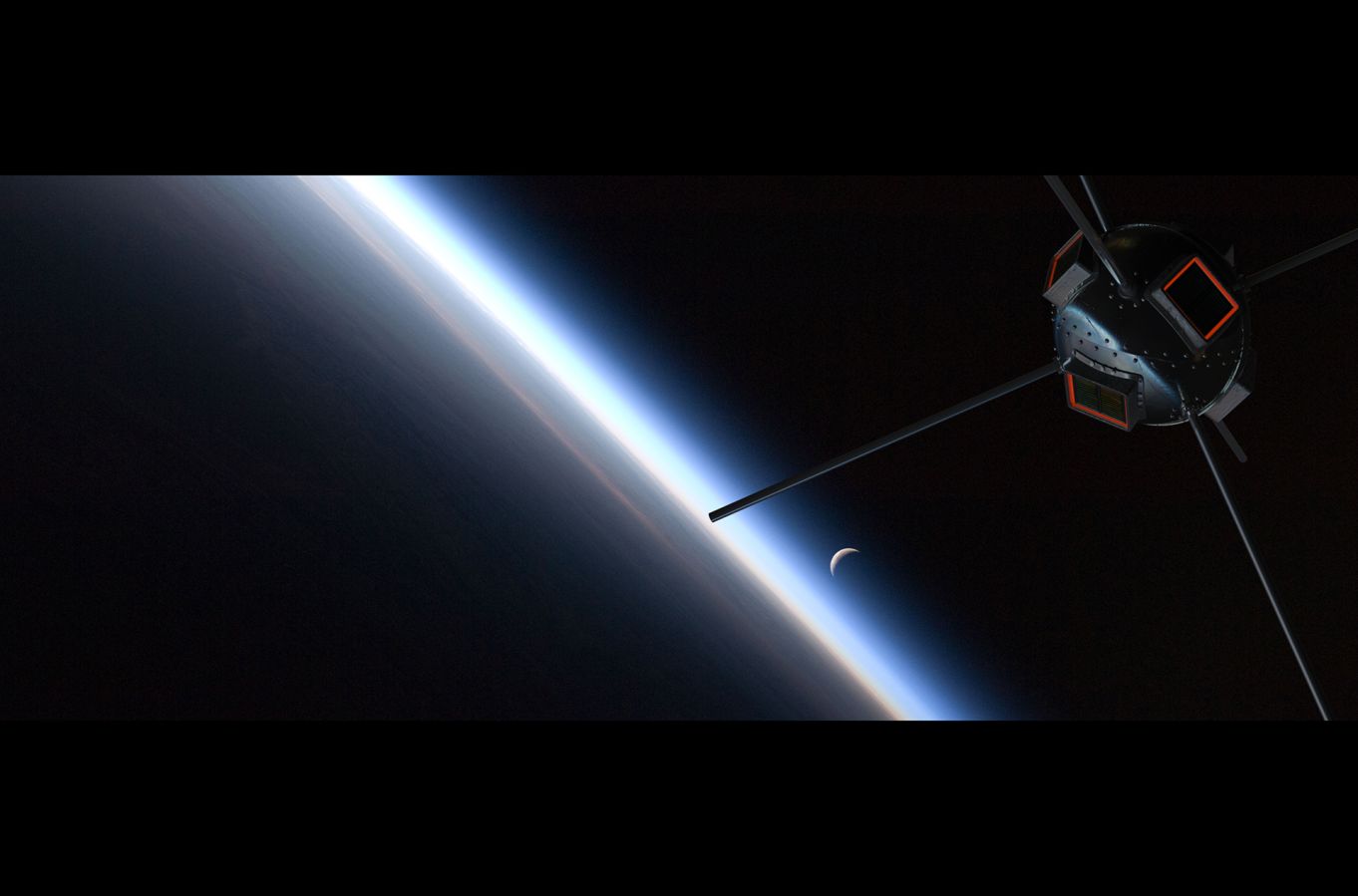
Adrift, images: Cath Le Couteur, Daffy London. Courtesy of the artists.
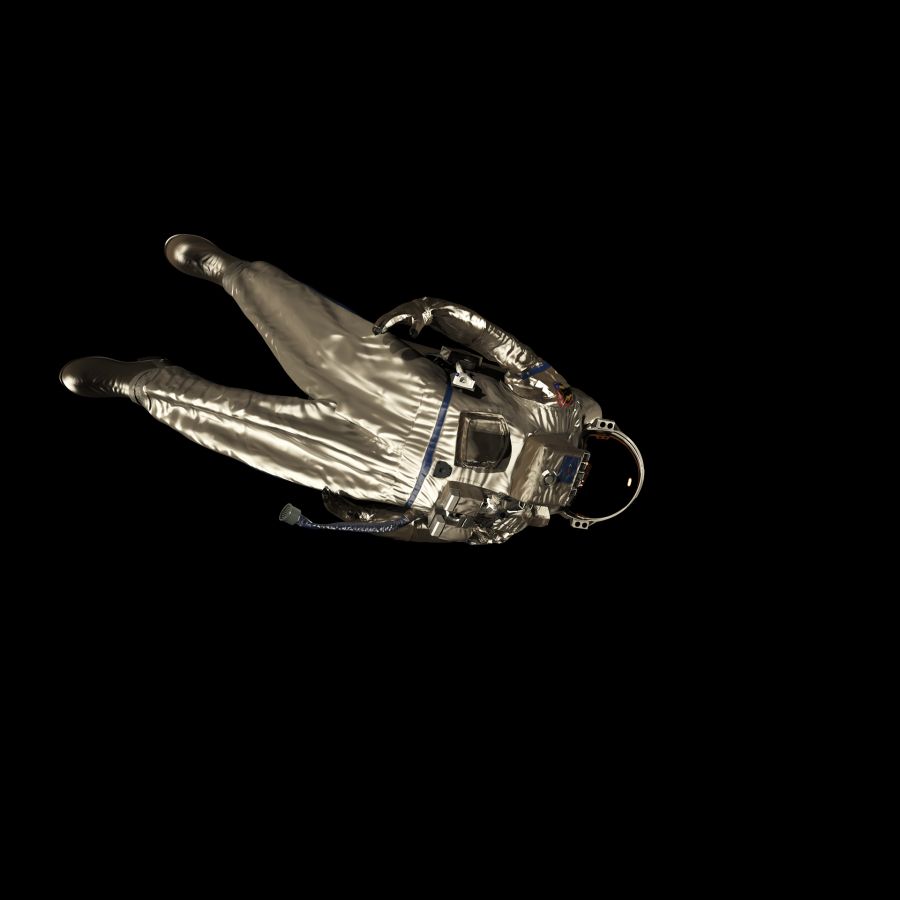
SuitSat, images: Cath Le Couteur, Daffy London. Courtesy of the artists.
Secret World of Space Junk
Two short films
Cath Le Couteur
2017 / 2018
- Adrift
2017, film, 11:03 minutes. Director and Producer: Cath Le Couteur. Vanguard voice: Sally Potter. Subtitles: Clément Martin. Full credits provided in the film.
The first of two short films, Adrift, highlights the paradox between the short-term use of hardware in space and their long-term harmful trajectories in perennial orbit. It begins with the tale of the astronaut Piers Sellers, who dropped his spatula in space in 2006, which became a deadly instrument, travelling at 7,500 kilometres per second. The film then takes us to Chile’s Collowara Observatory, the International Space Station, and finally to Thailand to view debris burning up on Earth re-entry.
- SuitSat
2018, film 2:30 minutes. Director: Cath Le Couteur. SuitSat voice: Gruff Rhys. Subtitles: Clément Martin. Funded by The Space. Full credits provided in the film.
The second film, SuitSat, is a digital visualization of a Russian astronaut’s suit that was pushed out of the International Space Station in 2006. Fitted with a radio transmitter, it was meant to communicate with Earth as a satellite. But when the device failed a few days later, the suit was burnt up in Earth’s atmosphere as a piece of space junk.
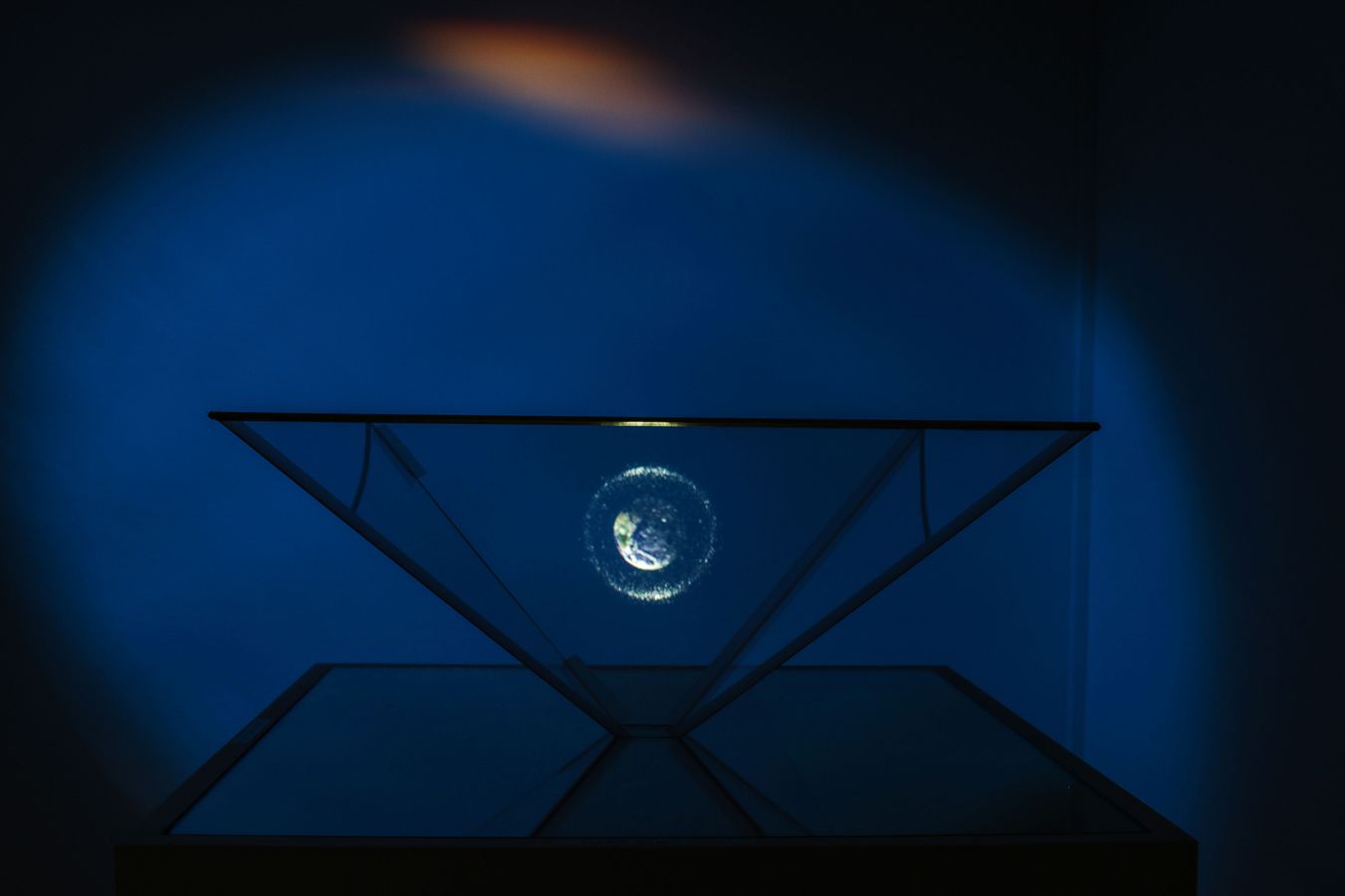
Image: Nick Ryan. Courtesy of the artists.
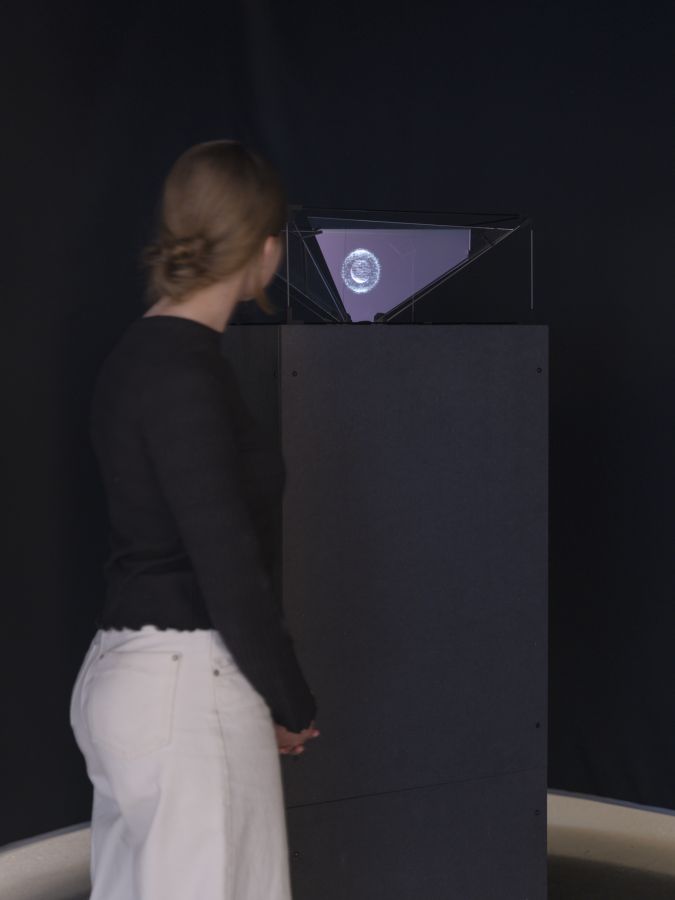
Image: Julien Gremaud.
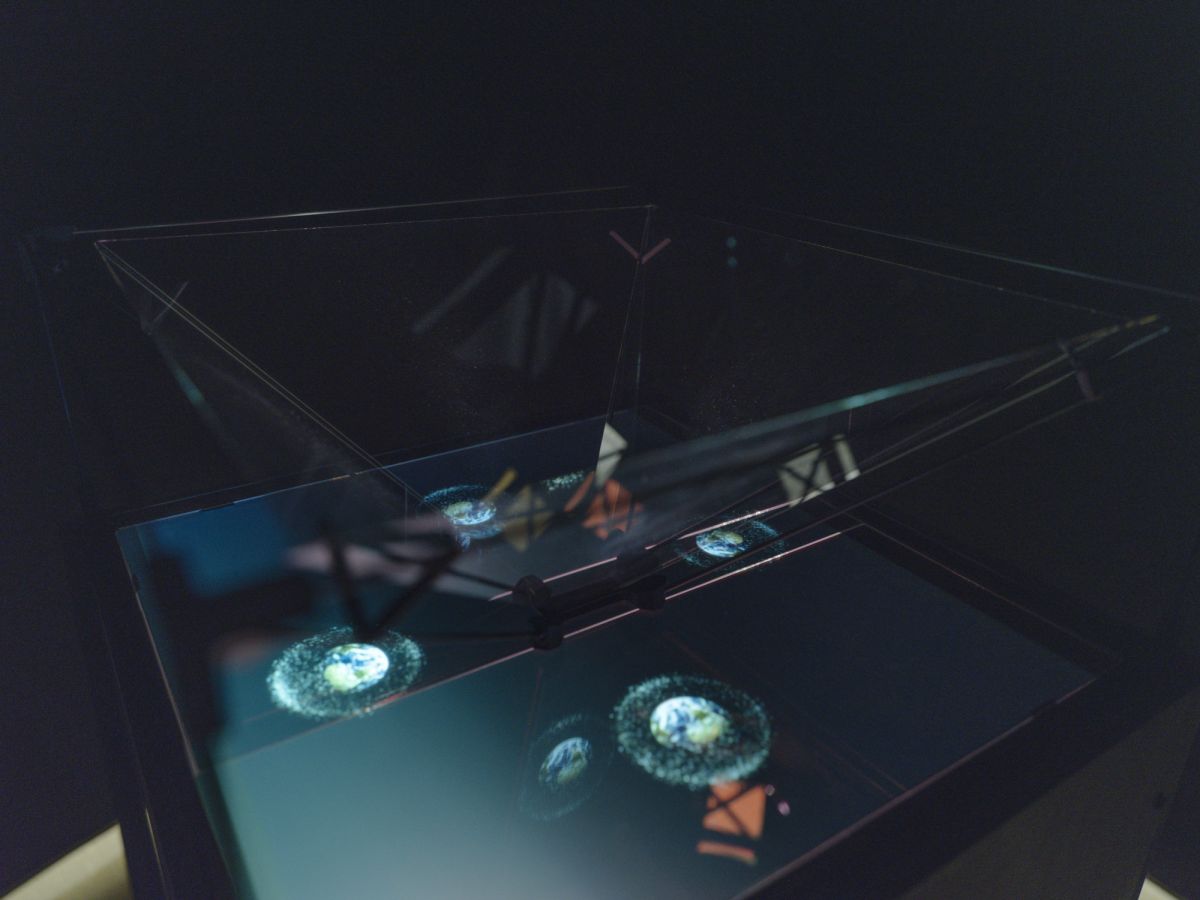
Image: Julien Gremaud.
Debris-o-Gram
Hologram, bespoke orbital mechanics simulator, round cabin.
Cath Le Couteur and Nick Ryan
2017
Presented in an enclosed viewing cylinder, Debris-o-Gram is a live holographic projection of the Earth and the cloud of space debris that encircles it. Each dot in the visualization represents a real piece of junk, with its position calculated in real time. Debris-o-Gram thus materializes a detectable swarm of 52,829 objects surrounding the Earth.